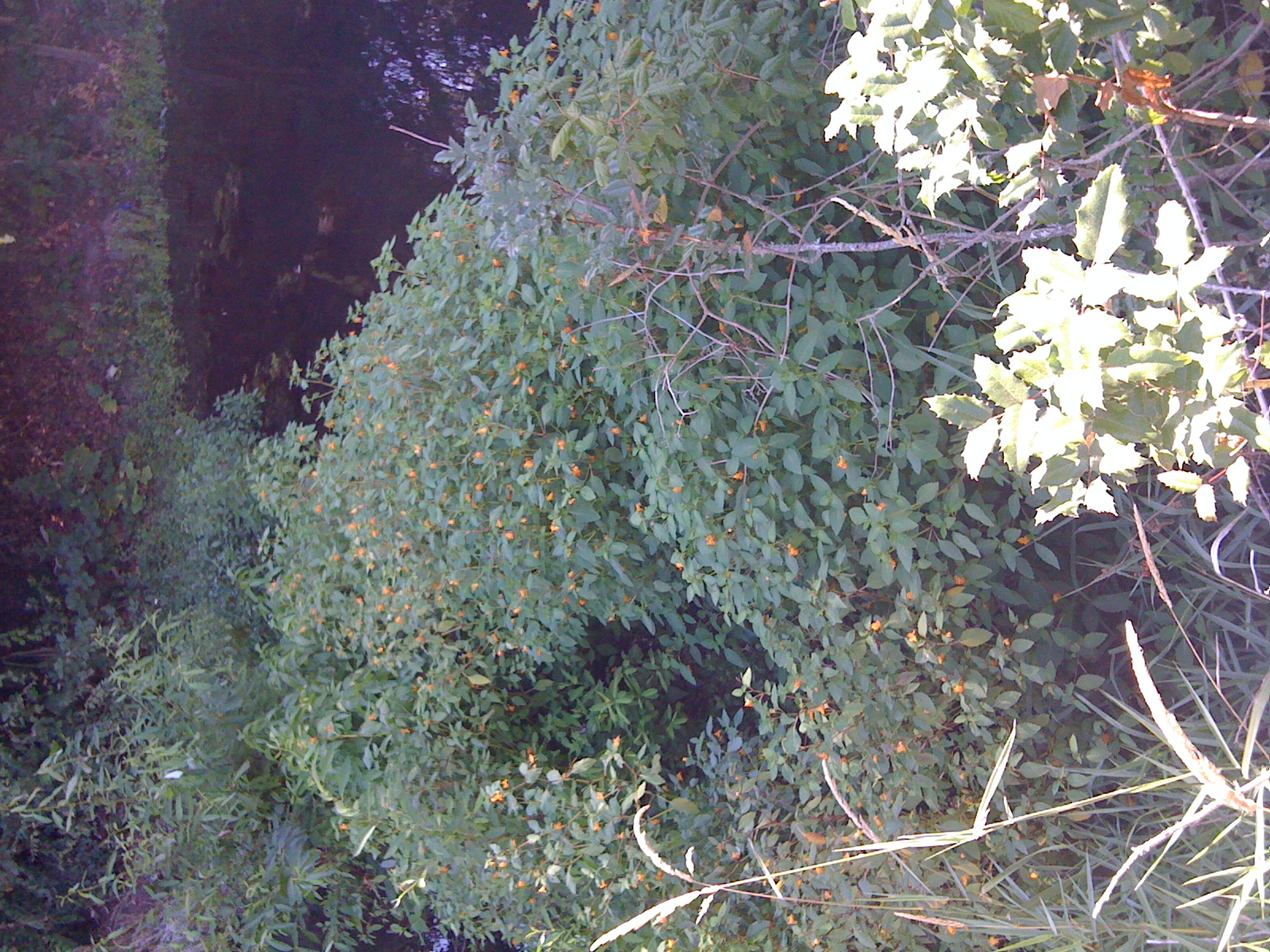Spotted Jewelweed (Impatiens capensis) on Aug 20, 2011
Originally reported as Policeman's Helmet (Impatiens glandulifera)
Submitter does not have a specimen
EDRR Status: Local expert notified
Description of specimen
about 10-15 square feet of plants in bloom



" I. capensis is everywhere. Peter Zika has a paper from 2006, mentioning the interesting history of how this species was considered native; basically confusion with native Impatiens and taxonomy of the genus in general. Here is his paper in a nutshell at BEN (down a bit on the page):
http://www.ou.edu/cas/botany-micro/ben/ben408.html
Confusion still abounds; read this from the BPOTD at Univ. of BC in Canada, written by botany professors (and see Ed Alverson’s comments at the bottom of the page):
http://www.botanicalgarden.ubc.ca/potd/2010/10/impatiens_capensis.php
I see this species in practically every riparian corridor I visit up around the Portland area, which I am new to. Never saw all that much around the mid-Valley but that is likely to change. One exception: I visited Champoeg State Park when I first moved here in 2005 and was blown away by density oft his plant there. The dominant understory along those steep, eroded banks of the Willamette at that park? I. capensis. Bruce Newhouse has an observation from around Eugene from the 90’s, I think. As Zika points out, there are no observations/collections from before the 50’s in the NW; quite unlikely for so charismatic a plant.
So what’s the big deal? This species (and some other congeners) dominates riparian understories, shading out native forbs and outcompeting for pollinator services (as also documented with I. glandulifera in Germany). The big problem is that they are annuals: come fall this massive amount of biomass melts away and exposes bare soil=erosion=reduced water quality, salmonid habitat, etc. "
Thanks again Doug. Keep up the reports!
Tania
Tania Siemens
WISE Program Coordinator (Watershed and Invasive Species Education)
Oregon Sea Grant Extension
Oregon State University
tania.siemens@oregonstate.edu
541-914-0701
Tania Siemens
Aug. 25, 2011, 4:42 a.m.